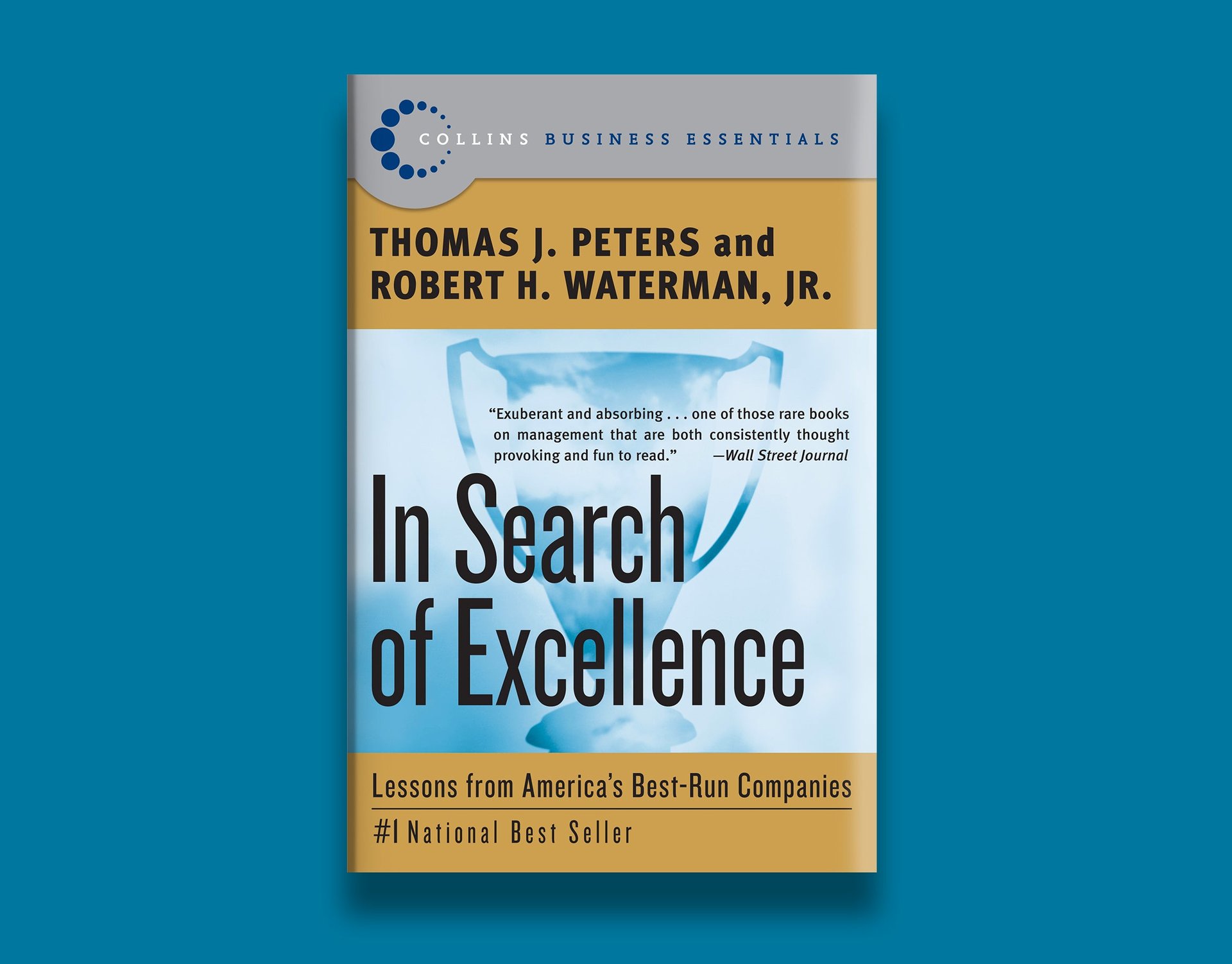“In Search of Excellence,” by Robert H. Waterman Jr. and Tom Peters


Full title: In Search of Excellence: Lessons from America’s Best-Run Companies
Number of pages: 400
Year first published: 1982
The big idea: In 1977 McKinsey & Company sent a newly minted PhD graduate from Stanford named Tom Peters around the US to look at “the relationship between strategy, structure, and management effectiveness.” As Peters said, “There was no carefully designed work plan. There was no theory that I was out to prove. I went out and talked to genuinely smart, remarkably interesting, first-rate people.” He spoke to people from 46 different companies, including many of the major corporations at the time, like IBM, Johnson & Johnson, Boeing, McDonalds, P&G, Delta, and HP. The research led to Peters’ and Waterman’s book, which is filled less with theory and structure than it is with entertaining stories told by the giants of industry. Peters and Waterman boiled their findings down to eight common attributes that made these innovative companies so successful.
5 things worth learning:
- Successful companies “treated the rank and file as the root source of quality and productivity gain.” Every worker, from the bottom of the company to the executive conference room, was seen as a source of ideas.
- Workers were given autonomy and encouraged to innovate. This was true even when it involved some practical risks. The companies were supportive of good tries, even when they did not lead to successful innovation.
- Successful companies maintained clear corporate values. And anyone who worked in those companies was asked to commit to the values.
- The form of the organization was kept simple. These companies were not top-heavy. Fewer people were at the top levels and all of them were expected to be “hands on.”
- All employees were asked to stay close to the people they served and to listen and learn from them. Many of the product ideas were generated from these connections with customers.
Quote it: “Figure out what your company should stand for, what would give your people the most pride. Then actively manage toward that value system. Remember that profit is to business as breathing is to life. The top companies make meaning, not just money.”
Read, skim, or skip? Although dated, this book is worth reading. With interesting anecdotes and informative strategies, it promotes values that are all-too-often ignored or considered insignificant in the current business climate. Yes, it has some problems and unanswered questions—for instance, many of the companies described in the book have failed, leaving us wondering what factors are missing from Peters’ list. But it’s easy—even fun—to read, and worth taking some time to think about, and even better, to discuss with colleagues, staff, and superiors.